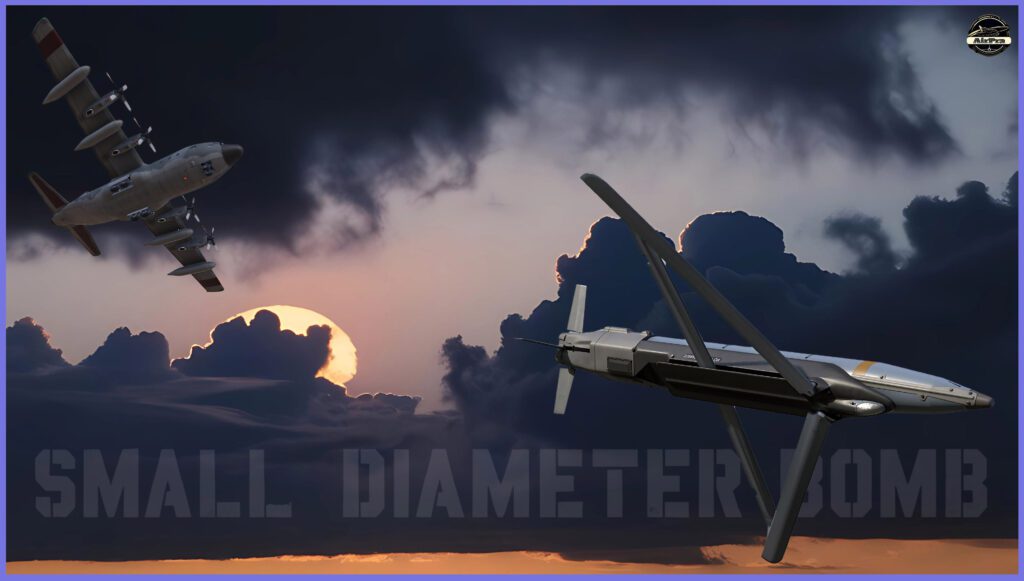The GBU-39 Small Diameter Bomb (SDB) stands out as a revolutionary tool in modern aerial warfare, combining precision and deadly effectiveness. Small Package Big Power GBU-39 SDB —this lightweight munition delivers high-impact performance with exceptional targeting accuracy.
Built for today’s combat needs, it enhances strike capability while reducing collateral damage, giving any aircraft the upper hand in demanding operations such as SEAD.
Carrying out precise airstrikes in heavily defended areas was once an incredibly risky challenge. In earlier times, pilots faced extreme danger while flying deep into enemy zones to complete bombing runs. Survival was uncertain, and returning safely was never guaranteed. Still, each mission had to be executed—regardless of the risks.
Thankfully, advancements in munition technology have significantly lowered the risks once associated with aerial bombardment by as much as 80% compared to earlier eras. Modern airstrikes now rely on guided glide bombs rather than conventional free-fall munitions, delivering exceptional accuracy.
Today’s precision levels have achieved a Circular Error Probable (CEP) of just one meter or even less.

Let’s explore one of the most accurate bombs ever created by Boeing for precision strike missions—the GBU-39 Small Diameter Bomb (SDB). Its compact design allows four SDBs to be loaded in place of a single 2,000-pound bomb on each pylon.
Weighing just 250 pounds (110 kg), this precision-guided glide bomb enables aircraft to carry more munitions with higher accuracy. It is also compatible with nearly all American-made military jets.

Going back two decades to 2002, Boeing and Lockheed Martin were in competition to develop the Small Diameter Bomb (SDB) for the U.S. Air Force. The objective was to design a high-precision, low-collateral-damage weapon that would allow aircraft to carry more bombs per mission.
In April 2005, Boeing was selected as the primary contractor, with initial test drops conducted later that year as part of the evaluation phase.

Equipped with a 206 lb (93 kg) warhead, the GBU-39 relies on GPS-aided inertial navigation for precise guidance. It also features fold-out wings, enabling it to glide up to 60 nautical miles. This extended range allows aircraft to strike from safer stand-off distances.
The GBU-39 excels at targeting fixed, fortified, or high-value objectives while reducing the risk to civilians and allied forces.

In September 2006, the Small Diameter Bomb (SDB) team delivered the first units to the U.S. Air Force. The following month, the SDB achieved Initial Operational Capability (IOC) on the F-15E Strike Eagle. By February 2008, the 1,000th SDB I and the first 50 Focused Lethality Munitions (FLM) had been successfully delivered.

By 2011, Boeing had started developing the Laser SDB I, integrating laser guidance technology adapted from the JDAM program to reduce costs. In 2014, U.S. Special Operations Command began deploying the Laser SDB, which was specifically designed to overcome threats posed by GPS jamming systems.
To date, over 17,000 Small Diameter Bombs have been produced, including advanced variants like the Ground-Launched Small Diameter Bomb (GLSDB), with each unit costing over US$40,000 (as of FY 2021).
The success of the GBU-39 paved the way for further innovation, such as Raytheon’s GBU-53/B SDB II (StormBreaker), equipped with tri-mode seekers capable of engaging moving targets. Even today, the GBU-39 remains a vital precision-strike asset in the arsenals of the U.S. and its allies.

Precision Redefined: The GBU-39‘s Tactical Design Advantage
The GBU-39 SDB is a highly precise, lightweight, air-launched glide bomb developed to increase loadout efficiency while reducing collateral damage. Designed by Boeing, the SDB enables stand-off precision attacks from safe distances. It is ideal for urban warfare, strategic infrastructure strikes, and high-value target elimination.
Airframe and Structure
The GBU-39 SDB is engineered with a compact, aerodynamic form optimised for precision strikes. When stowed, it measures 70.8 inches (1.8 meters) in length and 7.5 inches (190 mm) in diameter, with foldable wings that extend to 5 feet 3.3 inches (1.61 meters) to enhance its glide range.
Weighing only 285 pounds (129 kg), it enables aircraft to carry more weapons per mission without compromising agility or performance.
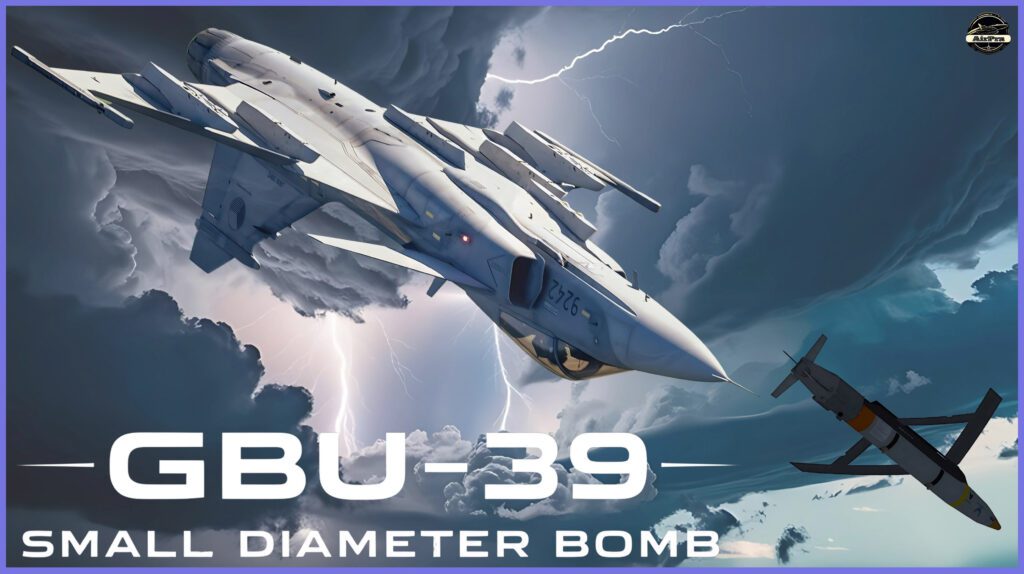
Warhead: It features a 206-pound (93 kg) advanced blast-fragmentation warhead with a hardened steel nose, designed for penetrating bunkers or light armour.
Casing: It features a modular, low-drag body design, with a steel casing on the SDB I variants and a composite casing on the Focused Lethality Munition (FLM) variant.
Range: The bomb is equipped with fold-out DiamondBack wings that deploy upon release, allowing a glide range of over 60 nautical miles (110 km) when air-dropped.
Guidance and Navigation
Primary Guidance: The bomb uses a GPS-aided Inertial Navigation System (INS) for high precision, with a Circular Error Probable (CEP) ranging from 1 to 5 meters under optimal GPS conditions. Variants such as the laser-guided SDB (GBU-39B/B) incorporate semi-active laser guidance for targeting moving or relocatable objectives.

Smart Release: Precision Deployment of the GBU-39
The SDB is integrated into the BRU-61/A smart carriage system, allowing it to be loaded in sets of four on a single pylon station, greatly boosting munition capacity per sortie. The GBU-39 SDB is designed for use across a wide range of aircraft, currently operational on platforms such as the F-15E Strike Eagle, Panavia Tornado, JAS-39 Gripen, and F-16 Fighting Falcon.
Future integrations are planned for additional aircraft, including the F-35 Lightning II, A-10 Thunderbolt II, B-1B Lancer, B-2 Spirit, B-52 Stratofortress, and AC-130J.
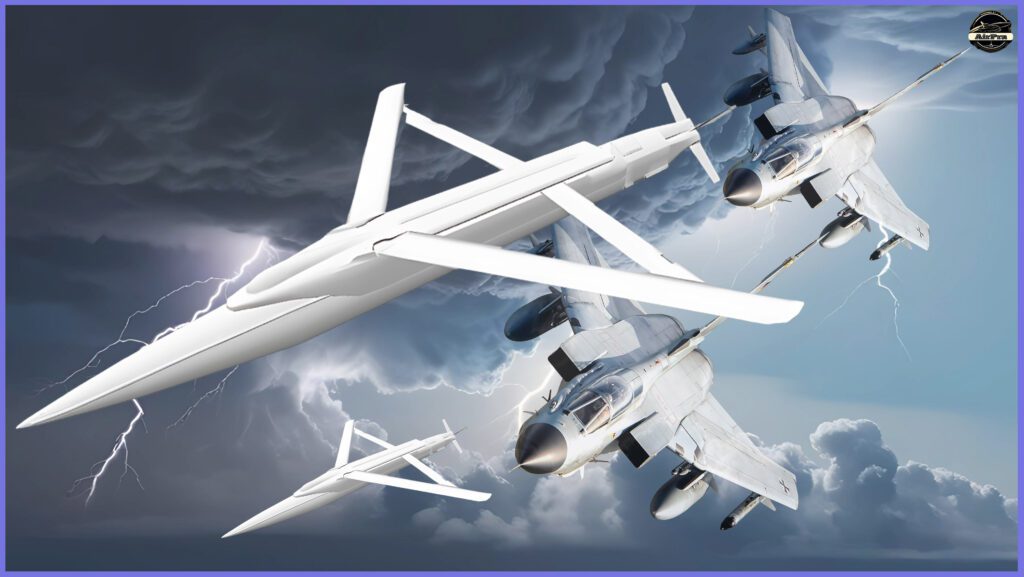
Unmanned platforms like the General Atomics MQ-9 Predator B and MQ-20 Avenger are being considered for potential integration with the SDB. Its lightweight structure and compact form allow aircraft to carry a larger quantity of precision-guided munitions, thereby enhancing overall mission effectiveness.
Precision in Every Form: GBU-39 SDB Variants and Uses
The GBU-39/B (SDB I) is the baseline model of the Small Diameter Bomb, specifically designed to engage fixed targets with pinpoint accuracy. The warhead weighs 206 lb (93 kg) and includes a 36 lb (16 kg) AFX-757 explosive fill, certified as an insensitive munition.
Featuring GPS-aided guidance, it enables aircraft to strike from a distance while carrying more munitions, making it ideal for modern precision strike operations.

The GBU-39A/B Focused Lethality Munition (FLM) is a specialised SDB variant designed for low-collateral, high-precision strikes. Weighing 137 lb (62 kg), it uses AFX-1209 MBX explosive and a composite case. It can penetrate over 3 feet (0.91 m) of steel-reinforced concrete, making it effective against hardened fixed targets.
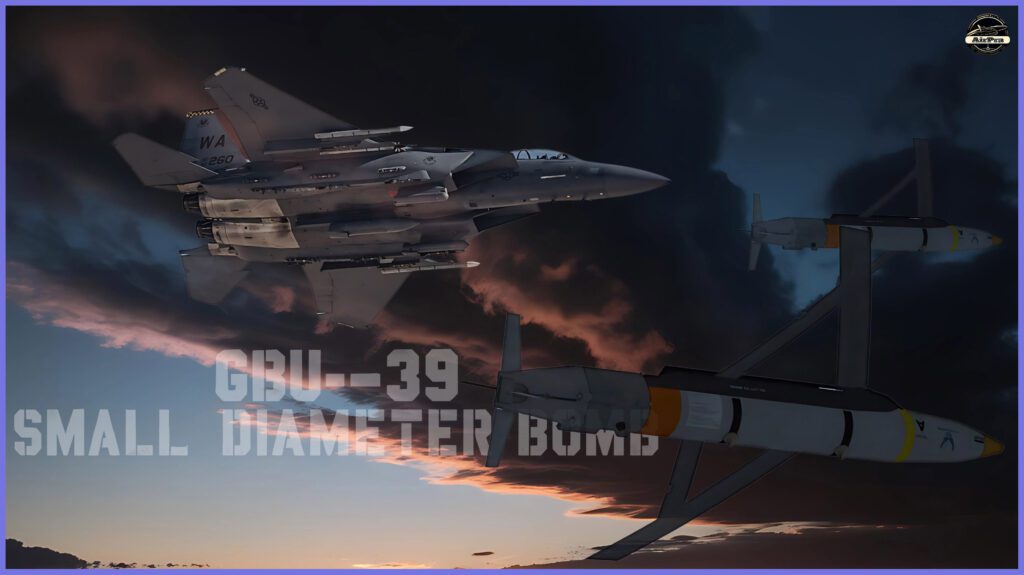
The GBU-39B/B Laser SDB enhances the original design by adding semi-active laser guidance, enabling precision strikes on moving targets. It features a 36 lb (16 kg) AFX-757 enhanced blast explosive within a penetrating steel case. This upgrade increases versatility while maintaining the SDB’s compact form and effectiveness in dynamic combat scenarios.
The Ground-Launched Small Diameter Bomb (GLSDB) merges the GBU-39 with an M26 rocket motor, allowing deployment from ground platforms like the M270 MLRS and M142 HIMARS. This setup provides ground forces with extended-range precision strike capability—reaching distances beyond 150 km—while maintaining accuracy against a wide range of target types.
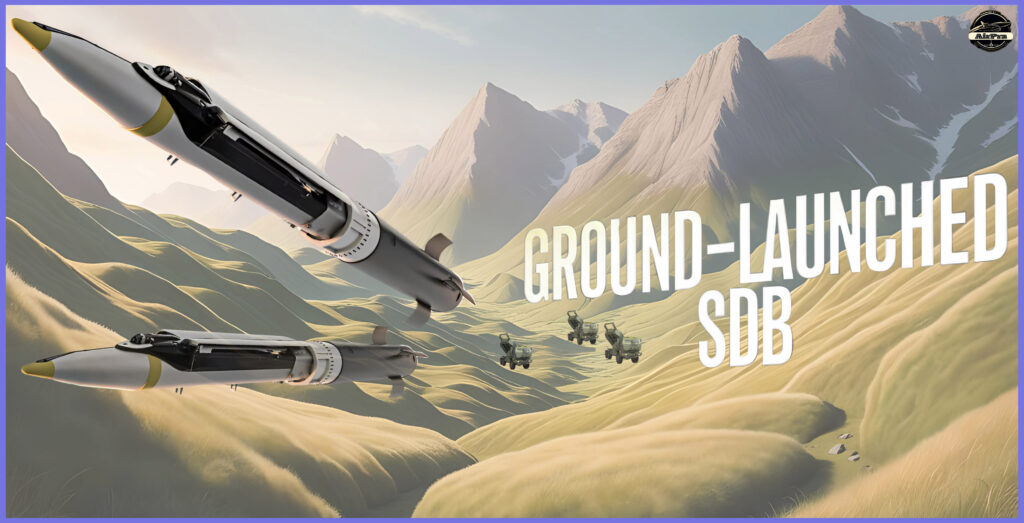
Note to Our Readers!
Information in our articles may become outdated over time. Please consult current sources for the latest updates. We’re committed to delivering quality content on military topics, and your support through affiliate purchases helps us continue.
Feel free to share suggestions or content requests in the comments—your feedback drives us forward. Thank you for being part of our community!
